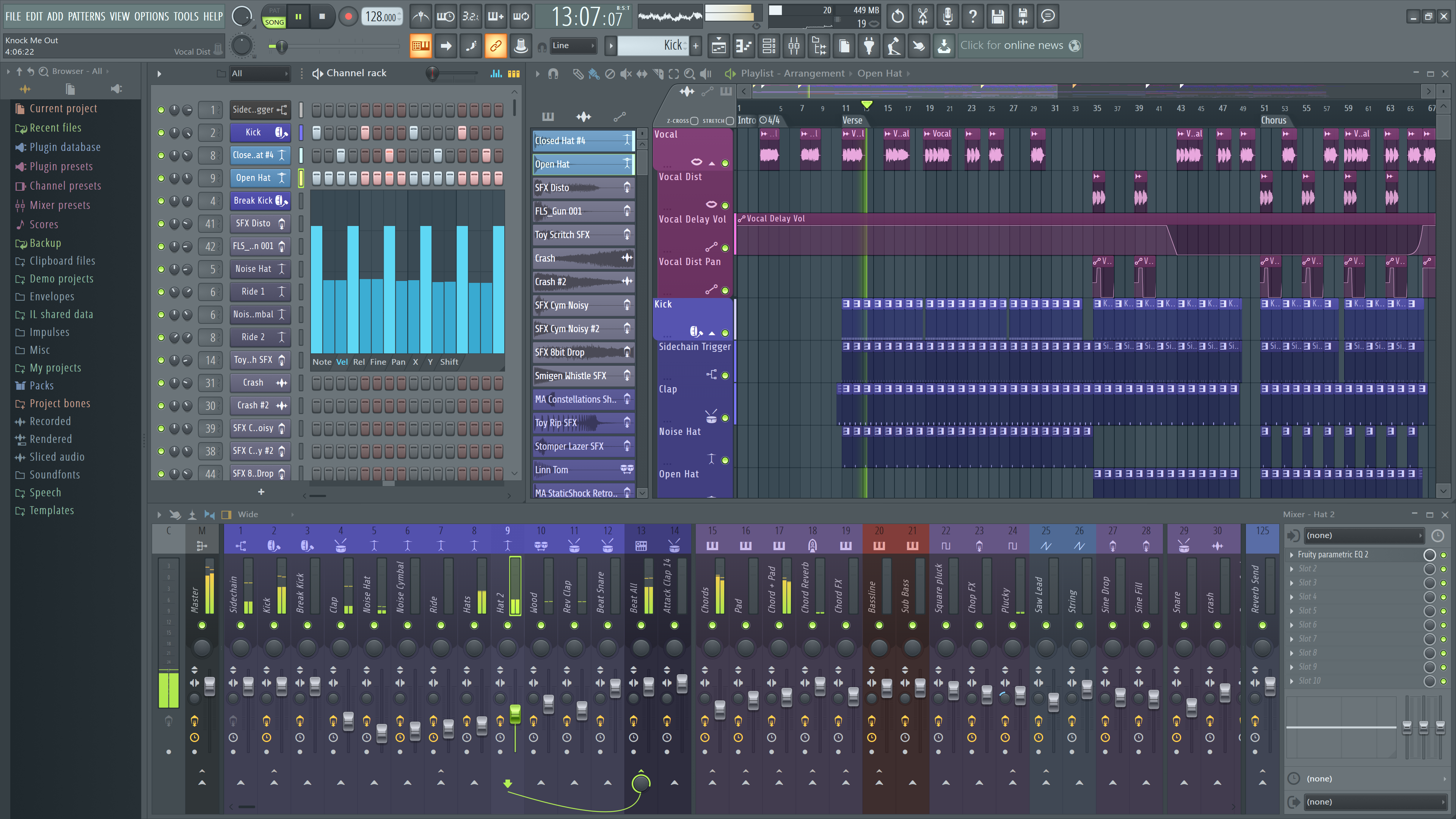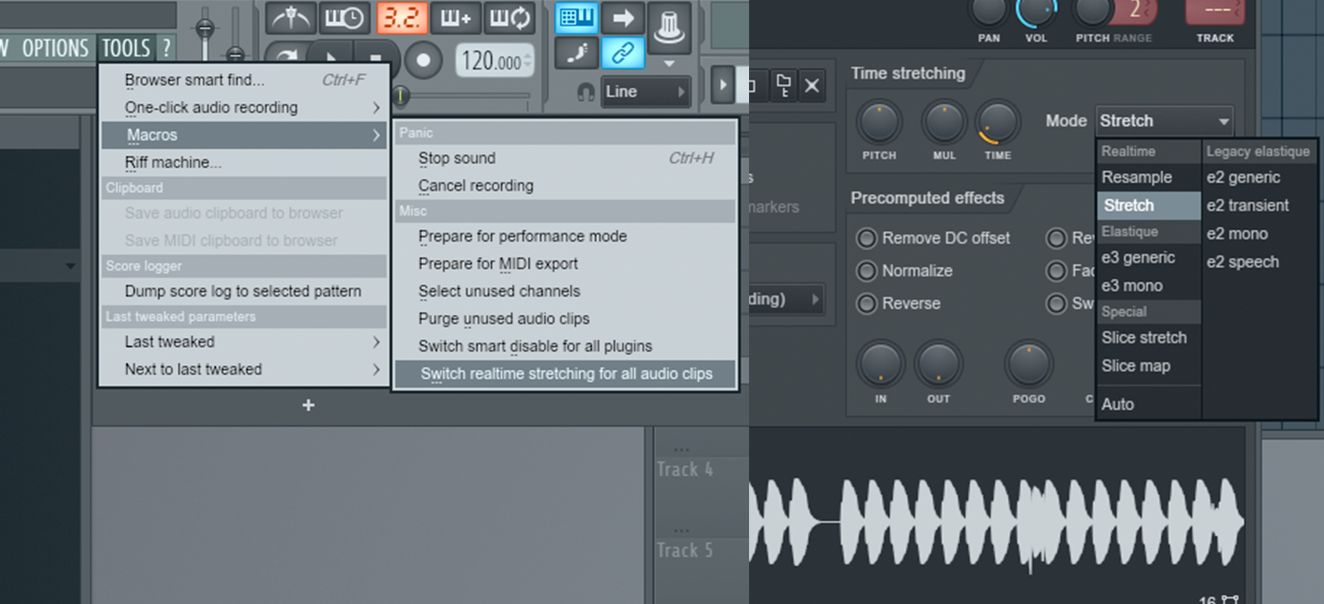

Next is the Re-Pitch algorithm, which actually just does what a sampler does - it changes the ratio at which the samples are played back according to the sample rate. Here I've found that ~8ms corresponds to the wavelength of the 3rd harmonic, meaning that when the grains are played back, the sounds gets eerily resonant! However, it also lets us get really small grain sizes. It lets us add some 'flux' to vary the windowing and playback rates of the grains, specifically to avoid the glitching effect we got from Tones. The Texture algorithm is an interesting one. However, the effect this creates is really glitchy! Using a smaller grain size on pitched material is usually not recommended, especially with lower pitches, as the periodic cycles that make up pitch are broken up by the grain edges. This works by chopping up the audio into 'grains' - tiny sections of audio with short fades applied to the starts and the ends, which are played repeatedly to fill up the gaps if we're slowing the playback down.


Now, we end up with a short 'window' of sound occurring where Live expects there to be a 1/32 subdivision: 8 windows per beat. In this example, I've set it to preserve every 1/32 subdivision, and adjusted the 'Transient Envelope' to be very short. It 'slices' the audio at specific points: either wherever it detects a transient, like a drum hit, or on every subdivision. This is the default setting, and is intended for rhythmic material.

Increasing the number here makes the audio play back slower, and vice-versa.įirst up is the 'Beats' algorithm. BPM' value to change the amount of TC/E you want to apply. The algorithms are selectable via a drop down menu in this column, and you can use the 'Seg. In the 'Sample' box, you need 'Warp' (in the second column) switched on. To see the different algorithms, load some audio into a track and click on the coloured bar at the top of the audio to enter the 'Clip View'. Depending on which TC/E algorithm you're using, you'll get different effects and artefacts which you can use either to make the pitch shifting/ time stretching sound smooth and natural, as intended, or for serious mangling. We have some sustained, pitched content here as well as some more erratic, noise-based textures mixed in. Let's get started by checking out the source audio in its original form: In this tutorial, I'm going to give you a whistle-stop tour of what can be done with each of the algorithms. Did you know, however, that there are quite a few interesting and novel effects to be had by creatively misusing the different TC/E algorithms' We all know that Ableton Live's automatic tim e compression/ expansion facilities are second to none, allowing us to sync loops together effortlessly, whatever their original tempi.


 0 kommentar(er)
0 kommentar(er)
